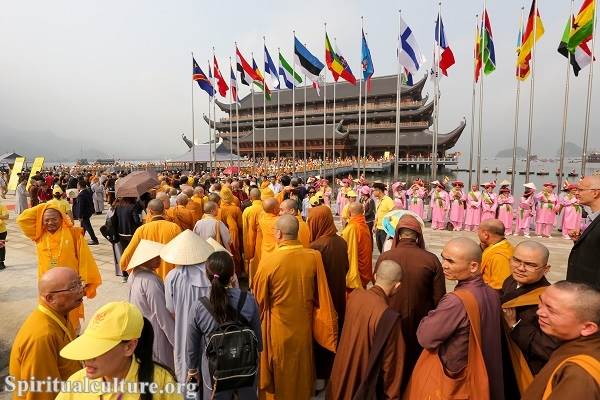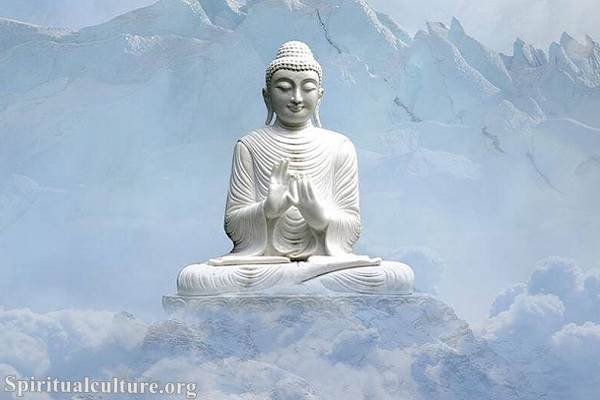Buddhism is a spiritual tradition and philosophy that originated in India around 2,500 years ago and has since spread worldwide. It is a path of practice and spiritual development that leads to insight into the true nature of reality. Today, Buddhism is practiced in many parts of the world, and its practices have evolved and adapted to different cultures and societies.
This article will delve into where Buddhism is practiced and the various Buddhist practices observed worldwide.
Where is Buddhism practiced?
Buddhism as a religion or philosophy is practiced in many parts of the world, with the most significant concentrations in Asia. It is the dominant religion in many Eastern countries, including Bhutan, Cambodia, Japan, Mongolia, Myanmar, Sri Lanka, Thailand, and Tibet. In these countries, Buddhism is not just a religion; it is a way of life that influences everything from daily routines to governmental policies.
However, it is not confined to Asia. In recent decades, Buddhism has gained considerable popularity in Western countries. In the United States, Buddhism has a significant following, with estimates indicating that nearly 1% of the population identifies as Buddhist. In Europe, Buddhism is also practiced, with the United Kingdom, France, and Germany having the largest Buddhist populations.
Buddhism in Australia and New Zealand has grown significantly over the past few decades, mainly due to immigration from Asia and an increasing interest in meditation and mindfulness practices. In Africa, although the number of Buddhists is relatively small compared to other religions, there are Buddhist communities in countries such as South Africa and Mauritius.

Buddhism Countries
Buddhism has since spread throughout the world and is now practiced by millions of people in many different countries.
Buddhism is particularly prevalent in Asia, where it has had a significant impact on the culture and society of many countries. Some of the countries where Buddhism is practiced include:
- Thailand: Buddhism is the main religion in Thailand, with over 90% of the population identifying as Buddhist. Thai Buddhism is heavily influenced by heravada Buddhism, which emphasizes the importance of individual enlightenment and meditation.
- Sri Lanka: Sri Lanka is another country where Theravada Buddhism is the predominant religion. Over 70% of the population identifies as Buddhist, and the religion has a significant influence on the country’s culture and politics.
- Cambodia: Buddhism is the official religion of Cambodia, and over 90% of the population identifies as Buddhist. Cambodian Buddhism is heavily influenced by both Theravada and Mahayana Buddhism.
- Laos: Over 60% of the population in Laos identifies as Buddhist, and Theravada Buddhism is the main form of the religion practiced in the country.
- Myanmar (Burma): Buddhism is the main religion in Myanmar, with over 80% of the population identifying as Buddhist. Myanmar Buddhism is heavily influenced by Theravada Buddhism, and the religion has played a significant role in the country’s politics and history.
- China: Buddhism was introduced to China over 2,000 years ago, and it has since become an important religion in the country. Chinese Buddhism is influenced by both Mahayana and Zen Buddhism, and there are many temples and monasteries throughout the country.
- Japan: Buddhism was introduced to Japan from China and Korea over 1,500 years ago, and it has had a significant impact on the country’s culture and society. Japanese Buddhism is influenced by many different schools of Buddhism, including Zen Buddhism and Pure Land Buddhism.
- Korea: Buddhism has been an important religion in Korea for over 1,700 years, and it has played a significant role in the country’s culture and history. Korean Buddhism is influenced by both Mahayana and Zen Buddhism.
- Vietnam: Buddhism was introduced to Vietnam over 2,000 years ago, and it has since become an important religion in the country. Vietnamese Buddhism is heavily influenced by both Mahayana and Theravada Buddhism.
- Tibet: Buddhism has been an important religion in Tibet for over 1,300 years, and it has played a significant role in the country’s culture and history. Tibetan Buddhism is heavily influenced by Vajrayana Buddhism, which emphasizes the importance of meditation and visualization.
- Nepal: Nepal is the birthplace of the Buddha, and Buddhism has been an important religion in the country for thousands of years. Nepali Buddhism is heavily influenced by both Mahayana and Vajrayana Buddhism.
In addition to these countries, Buddhism has also gained popularity in many Western countries, particularly in North America, Europe, and Australia. There are now many Buddhist communities and centers in these regions, and the religion continues to grow in popularity around the world.

